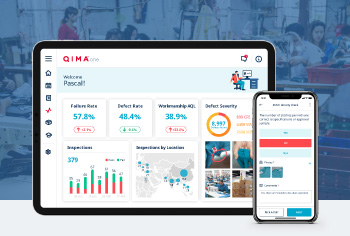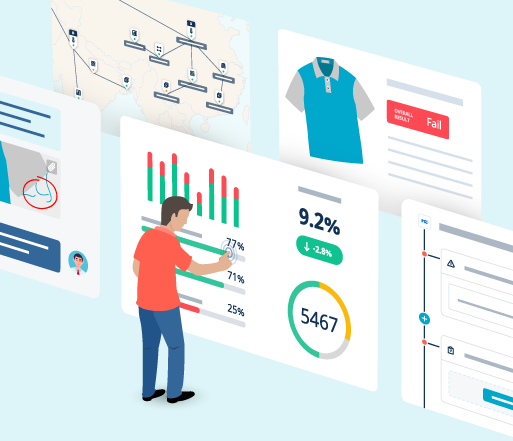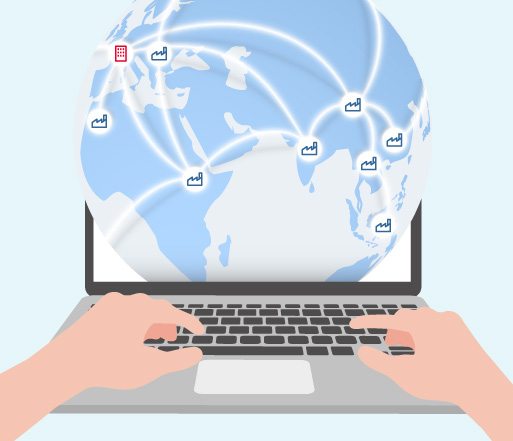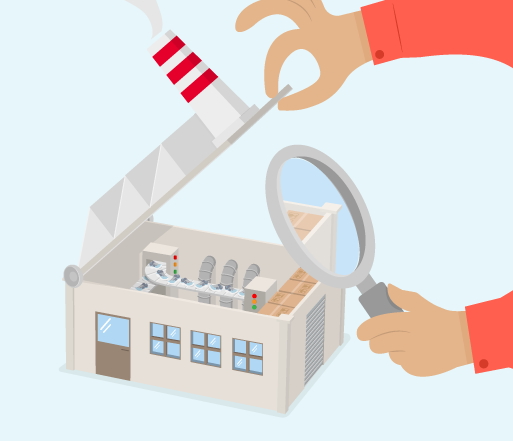
Article
4 Benefits of Supply Chain Transparency

Article
4 Benefits of Supply Chain Transparency
Article
4 Benefits of Supply Chain Transparency

Keep up-to-date with the latest supply chain insights.
"The fact that consumers nevertheless care about ethics and authenticity is indisputable: Provenance is already a big deal—and getting bigger." -- Harvard Business Review (2010)
The above quote from over a decade ago shows that supply chain transparency is neither a fad nor a new phenomenon. But while ten years ago, companies that understood the benefits of supply chain transparency might have had an edge on the competition, in today’s ethically-conscious consumer culture, transparency is quickly becoming the norm.
So how can your business reap the benefits of supply chain transparency?
Before answering that question, let’s look at what supply chain transparency is, and how it is different from supply chain visibility. After that, we will explore the four key benefits of supply chain transparency, and how you can achieve it.
What is Supply Chain Transparency?
Supply chain transparency, in essence, means that a business knows exactly what is happening at every stage of its supply chain, and communicates clearly stated, factually backed information about its supply chain operations internally and externally.
Examples of areas of concern covered by such disclosures include:
- product quality and safety standards
- raw material sourcing
- labor practices
- environmental protection and sustainability, and more.
Supply chain transparency is the best way to build trust between suppliers, companies and customers – because a transparent supply chain projects an image of a business that is honest and upfront about its practices, and therefore, trustworthy.
However, as mentioned above, genuine supply chain transparency requires factually backed information, not statements expected to be taken on faith. Indeed, today's consumers are no longer prepared to give a brand the benefit of the doubt if that brand cannot produce detailed information about their product's history. Therefore, visibility and reliable data are instrumental for enabling supply chain transparency.
Supply Chain Transparency vs Supply Chain visibility
Although these terms sound similar, there is an important difference between supply chain transparency and supply chain visibility.
In the simplest terms, visibility is internal, while transparency is external.
Supply chain visibility is the business’s ability to see into operations at every tier of its supply chain, and to enable its supply chain stakeholders to share with each other all relevant information, including:
- Daily production activities
- QC inspection reports
- Corrective and preventive actions
- Factory audits
- Labor conditions
- Raw material sourcing information
- Compliance and certification assurance
Achieving supply chain visibility puts all responsible parties on the same page for greater overall efficiency. Read more about the importance of supply chain visibility.
Meanwhile, while supply chain transparency is enabled by supply chain visibility, it represents the next step in information sharing, namely, offering manufacturing details of interest to the public. The external aspect is key: a business may have 100% visibility into its supply chain operations but it cannot claim supply chain transparency if it shares none of that knowledge externally.
4 Benefits of Supply Chain Transparency
The idea of publicly sharing information about the workings of your supply chain may seem daunting. Historically, businesses have always been wary of divulging too much about their sourcing, worried that it would make them less competitive, or open their practices to criticism. Furthermore, even for a business that’s prepared to be transparent, it can be time- and resource-intensive to collect all relevant data, ensure it is accurate, and consolidate it into a shareable format.
However, the many benefits of supply chain transparency offset the concerns and make the effort worthwhile. Here are some of them:
Customer Assurance
Today’s consumers firmly believe that they have the right to know exactly where their products are coming from and how they are made. Before they open their wallets, they want to be sure of the product’s safety and quality, and, increasingly, that the sourcing practices are in line with their own values.
By making information about your production practices, safety standards, and supply chain ethics publicly available, you help your consumers feel informed and empowered about their purchases, making them more likely to choose your product over one with no provenance information available.
Brand Loyalty
Customer retention is the gold standard for profitability in business. It costs five times as much to attract a new customer than to keep an existing one, and a 5% customer retention rate can increase profits by 25-95%.
When you share information about your supply chain, you foster consumer trust – which, in turn, earns your brand greater consumer loyalty, and makes your consumers more likely to buy your product again.
Brand loyalty also means positive word-of-mouth advertising, such as your consumers proudly displaying your logo, or your toy products being recommended parent-to-parent.
Furthermore, an enthusiastic customer base can be priceless for garnering your brand positive attention on social media: which is critically important, since 71% consumers are more likely to purchase products based on a social media referral.
Stronger Partnerships
The trust fostered by supply chain transparency is not limited to your consumers. A business with a transparent supply chain creates a culture of trust throughout its entire ecosystem, and attracts like-minded suppliers and partners.
Furthermore, a climate of trust and transparency will help you communicate openly with your suppliers, forge lasting partnership and drive continuous improvement through your supply chain. When your suppliers know that honesty and transparency is rewarded, they are much more likely to resolve production issues with you directly instead of trying to get away with substandard work or unethical behavior behind your back.
In turn, you can help your suppliers improve their production and quality management systems through better supply chain communication, QC data sharing, and quality and compliance training.
Competitive Edge Combined with Industry-Wide Improvement
The benefits of supply chain transparency can be far-reaching, and not limited to your business, but extending across your entire industry.
First of all, when you and your supply chain show the world proof of quality and integrity in action, you effectively gain a competitive advantage through responsible action.
But progress doesn’t stop there. Whether you are working to bring sustainably-raised meat to the market, or want to fight against the use of child labor, your company's open stance on the issues and commitment to improvement can be an effective catalyst for change.
Concerted action by industry players and human rights groups can drive meaningful changes --as can be seen from the improvement in Uzbekistan’s cotton harvesting practices after widespread pressure over the country’s use of child labor
A sweeping change like this is only possible through multi-stakeholder cooperation – but even more importantly, it must begin with transparency about sourcing practices.
Master these 6 strategies to
save your brand loyalty!
Learn now!
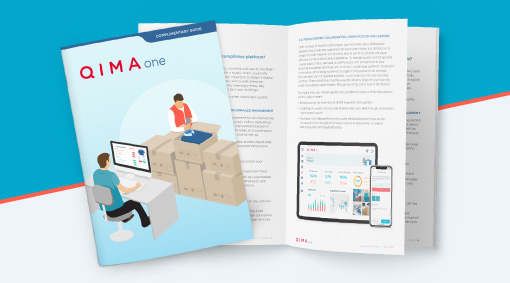
Master these 6 strategies to
save your brand loyalty!
Learn now!
4 Effective Tactics to Achieve Transparency
Transparency in supply chains is not achieved overnight. It is a far-reaching ambition, and a challenge that even companies with major resources may find daunting.
However, keeping in mind the many benefits of supply chain transparency for businesses, consumers, industries, and society as a whole, it is a cause that is worth pursuing.
The following are some of the key tactics for achieving transparency in your supply chain.
-
Shared data
Ensuring transparency across your supply chain cannot happen without internal visibility. And visibility hinges on data: reliable, accurate, collected in real-time (or as close to real-time as possible), and shared across your supply chain.
Today's professional quality control and compliance software is specifically designed to gather data related to Testing, Inspection and Certification (TIC), including with such features as real-time alerts and inspection monitoring.
With the capability to tie together scattered QC data and disparate management systems under one accessible platform, you can see into every step of your supply chain, share all relevant information with the stakeholders, and track your products all the way from mill or farm to shelf and table.
-
Standardized processes
Having standardized inspection and audit processes is a good way to ensure that the data on quality, safety and ethical compliance gathered at all your suppliers’ factories is accurate and reliable – regardless of where the factory is located, and whether the inspections and audits are being conducted by your in-house team or third-party providers.
In addition, executing standardized processes means that your quality control and compliance KPIs and metrics are consistent across your supply chain: so, for example, an ethical score of 3.5 out of 5 stars means the same for your suppliers in Bangladesh and those in China.
True transparency means reporting clear and meaningful information, not an obscure set of numbers with no frame of reference. Standardized processes enable you to do just that.
-
Supply chain mapping
If ethical violations are discovered in parts of your supply chain that you aren’t familiar with, your lack of awareness will not be an excuse. On the contrary, your brand will take more reputational damage for allowing unauthorized subcontracting to happen without your knowledge, or not investigating the full supply chain of your raw materials.
With TIC-specific software, you can easily map your supply chain beyond your tier-1 suppliers and make sure all sourcing and subcontracting has been authorized and accounted for, both upstream and downstream. Professional quality control and compliance platforms give you a 360-degree view of your supply chain, and easy access to all relevant reports, including the state of each supplier’s compliance, ongoing corrective action, and the schedule for follow-up. That makes it easy to consolidate all the data you may wish to disclose about your suppliers and ethical practices.
Supplier scoring
If you have the capacity to capture supply chain data in real-time, store it digitally and analyze it (which is something you can do with quality control and compliance software), you can also maintain visible scorecards on your suppliers and production runs. This allows your own supply chain team, as well as all your supply chain stakeholders and future business partners to better understand potential risk areas within your supply chain.
How Can QIMAone Help?
QIMAone’s intelligent quality control and compliance platform can help you to first establish internal supply chain visibility, and then leverage it into complete transparency for your customers, stakeholders, potential suppliers and industry at large.
We can enhance your current supply chain management system with TIC-specific features that will consolidate your quality and compliance data under one easy-to-access platform, with intuitive dashboards and customized reports: so all responsible managers can stay up to date on daily production activities and procure the exact data they need in just a few clicks.
Finally, with the ability to monitor quality and compliance of your products and raw materials, you can make sure that your product specifications as well as ethical sourcing, environmental and labor standards are being followed to the letter. Think of it as supply chain visibility with benefits!
Visibility is the backbone for transparency, and transparency is the backbone for trust. QIMAone software aims to ensure both.
Want to see QIMAone in action?
Learn more by scheduling a demo today.
Most Popular Articles
Corrective Action Plans 101: Your Basic Guide to Ensuring Supply Chain Quality Excellence
The Benefits of a Data-Driven Supply Chain
6 Benefits of Supply Chain Visibility
How to Implement a Quality Management System
Simpli Home: Ensuring product quality and compliance with supply chain technology
7 Effective Ways to Improve Your Quality Management System
Supply Chain Visibility: Complete Guide for Supply Chain Managers
Boost Quality Control with Supplier Performance Metrics
